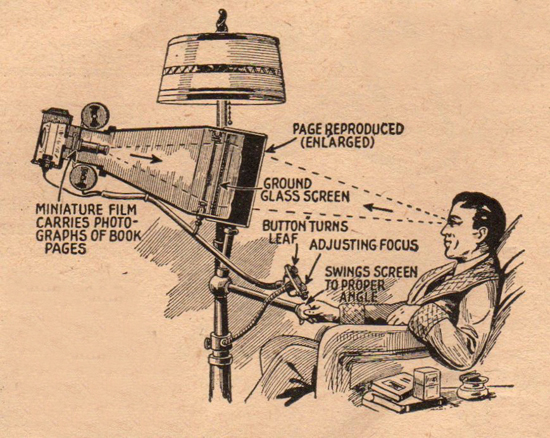
In 1934, the first idea for an iPad-like device was invented. The publication Everyday Science and Mechanics thoroughly depicted that digital devices were the future of publishing. This device used a microfilm reader propped up on a pole, enabling users to sit back and interface with media in an unconventional way. It was almost like a version of a home theater-type feature.
The magazine stated that “technology has proven itself capable of photographing books, and throwing them on a screen for examination. Here's a device for applying this for home use and instruction; it is practically automatic.”
The iPad-like, multimedia device contained a glass screen, control buttons, a film box that carried the media, and a focus adjusting features, In the photo, the illustration’s text explains that, “You can read a ‘book’ (which is a roll of miniature film), music, etc., at your ease.” Virtually kind of like an iPad, right?
Although René Dagron patented microfilm in 1859, the first real-world application of this invention was used in 1925 by banker George Lewis McCarthy who made tiny copies of documents.
In 1928, McCarthy sold the invention to Eastman Kodak who applied this technology to shrinking text in the 1930s, eventually enabling the New York Times to transfer all of its editions to microfilm. Microfilm became the most pragmatic method for archiving documents and material in the late 1930s.
Story via Smithsonian
.gif)
Advertisement
Learn more about Electronic Products Digital





